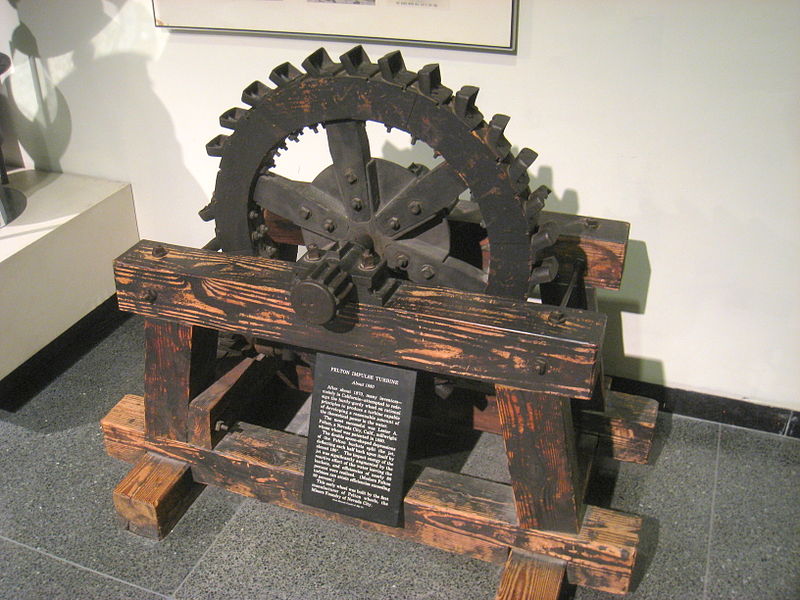Water wheels have been used to power mills and pumps for centuries. However, the traditional water wheel was inefficient: water hitting a bucket would splash back against the next bucket, slowing the wheel. This is especially true when water is delivered to the buckets under very high pressure.
Millwright Lester A. Pelton worked in the Mother Lode region during California's gold-mining era, where innovative miners had learned to concentrate a stream of water under very high head, through a nozzle and against banks of dirt and gravel in a process called hydraulic mining. Pelton experimented with high-head nozzles and water wheels, tinkering with at least 40 different configurations until he developed a split bucket water wheel.
Pelton's impulse water wheel was a key to tapping the vast waterpower of the mountainous American West. The Pelton wheel is still used throughout the world for generating power where sources of high-head water are available.
Facts
- The amount of power that a water wheel can generate from a stream of water is dependent on several variables, including: 1) the efficiency of the water wheel; 2) the volume of the stream of water; and 3) the pressure, or head, under which the water is delivered to the wheel. Thus, a high-head, low-volume hydropower facility can theoretically generate as much power as a low-head, high-volume facility.
- By splitting the stream of water from the nozzle into two parts, he was able to eliminate inefficiencies caused by water splashing back against other buckets. He also learned that by changing the angle of the water's impact against the buckets, he could control the speed and power of the water wheel.
- Within 15 years of its first serious demonstration at the Idaho-Maryland gold fields in 1880, 850 companies were using the Pelton wheel and many more were vying for orders.
- At the North Star Mine powerhouse in Grass Valley, California, an 18= foot Pelton Wheel, weighing 10,000 pounds, ran for 30 years pumping 1,000 gallons of water every minute from the mine.
- The wheels are typically used where water is under high heads, generally 1000 feet or more. They develop efficiencies up to 90 percent while utilizing small volumes of water compared to that which are used in turbines. Although there are some Pelton wheels operating under heads of even more than 2,000 feet, there are also many operating at heads of only several hundred feet.
- Pelton's hydraulic prime mover, known as a Pelton turbine, is still being manufactured at a scale and in sizes far beyond the original machines



